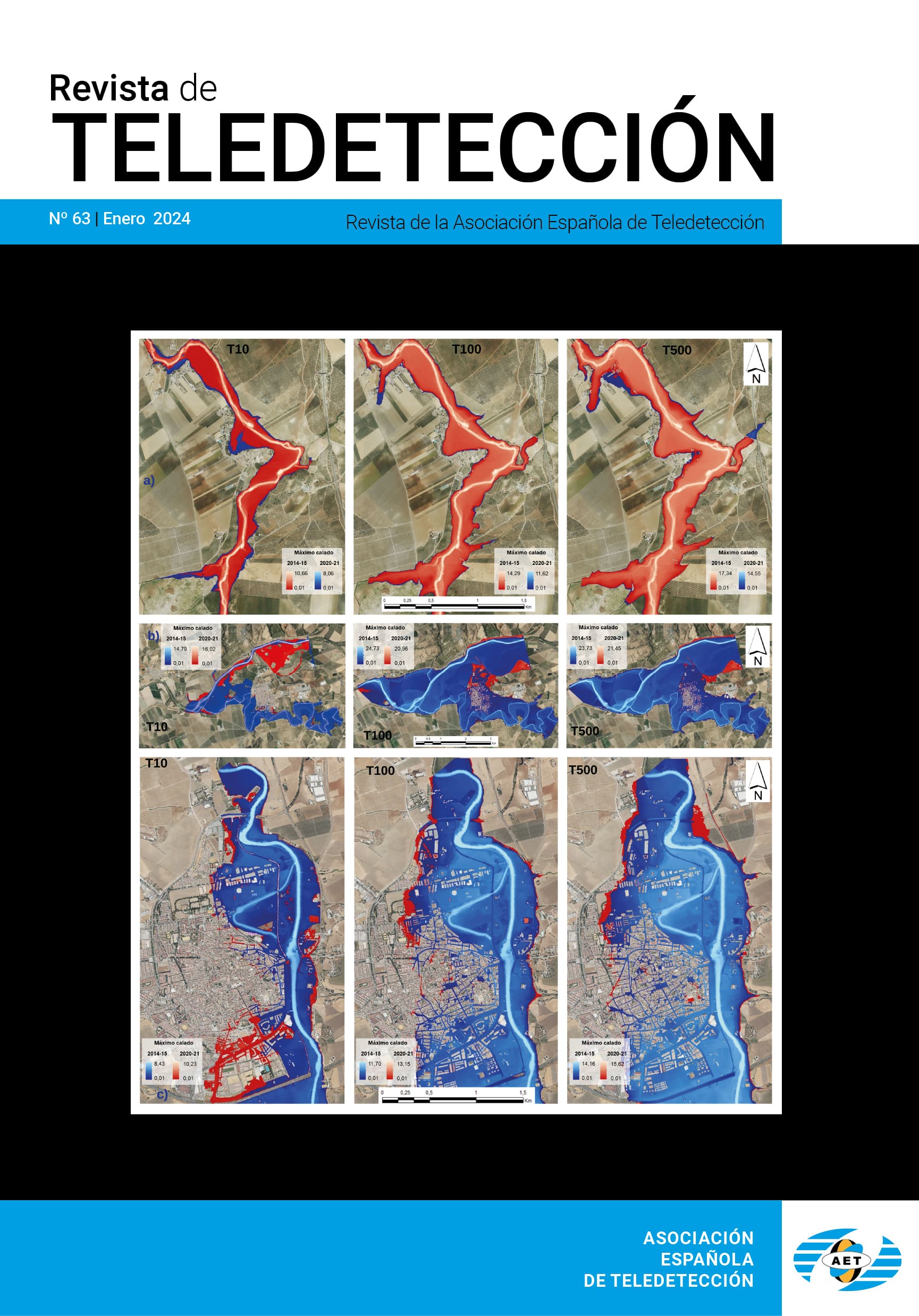Estimación de la humedad del suelo a partir de índices de vegetación y microondas pasivas
C. Mattar (cristian.mattar@uv.es)
J. A. Sobrino, J. P. Wigneron, J. C. Jiménez-Muñoz y Y. Kerr
RESUMEN
Este estudio presenta un método simple para la corrección del efecto de la vegetación en la estimación de la humedad de la superficie (ws) utilizando medidas radiométricas en banda-L. El método se fundamenta en una relación semi-empírica entre la humedad del suelo y la reflectividad polarizada incluyendo el efecto del espesor óptico de la vegetación, que a su vez se parametriza en función del índice de vegetación normalizado NDVI. El método se aplicó a medidas in-situ adquiridas sobre una zona de hierba en el marco del experimento SMOSREX entre los años 2004 y 2007. Dos polarizaciones (horizontal y vertical) así como cinco ángulos de incidencia (20º, 30º, 40º, 50º y 60º) fueron consideradas en el análisis. La mejor estimación de ws se obtuvo al utilizar dos polarizaciones y un ángulo de incidencia de 40º. En promedio, la precisión obtenida en las estimaciones de la humedad del suelo considerando los efectos de la vegetación fueron aproximadamente de 0.06 m3/m3, mejorando la estimación en 0.02 m3/m3 en relación al caso en que el efecto de la vegetación no es considerado. Los resultados indican que la inclusión de la vegetación (a través de un índice como el NDVI) resulta útil para la estimación de la humedad del suelo a través de regresiones semi-empíricas.
PALABRAS CLAVE: Humedad del suelo, Microondas Pasivas, Banda L, SMOS.
ABSTRACT
A simple approach for correcting for the effect of vegetation in the estimation of the surface soil moisture (wS) from L-band passive microwave observations is presented in this study. The approach is based on semi-empirical relationships between soil moisture and the polarized reflectivity including the effect of the vegetation optical depth which is parameterized as a function of the Normalized Vegetation Difference Index (NDVI). The method was tested against in situ measurements collected over a grass site from 2004 to 2007 (SMOSREX experiment). Two polarizations (horizontal/vertical) and f ive incidence angles (20º, 30º, 40º, 50º and 60º) were considered in the analysis. The best wS estimations were obtained when using both polarizations at an angle of 40º. The average accuracy in the soil moisture retrievals was found to be approximately 0.06 m3/m3, improving the estimations by 0.02 m3/m3 with respect to the case in which the vegetation effect is not considered. The results indicate that information on vegetation (through a vegetation index such as NDVI) is useful for the estimation of soil moisture through the semi-empirical regressions.
KEYWORDS: Soil moisture, Passive microwave, L-band, SMOS.
PULSE AQUI PARA DESCARGAR EL ARTÍCULO COMPLETO








